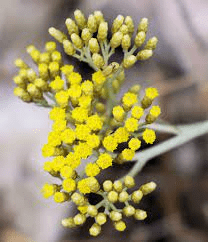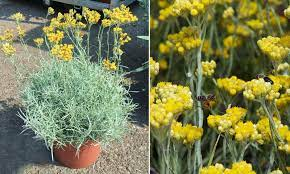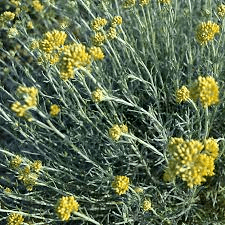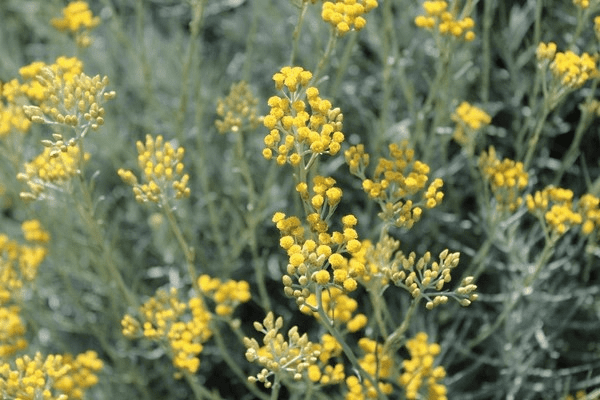Curry inflorescence refers to the flowering structure of the curry plant, scientifically known as Murraya koenigii. While the curry leaf itself is more commonly used in culinary applications, the inflorescence also holds significance, particularly in botanical studies and for those interested in the plant’s reproductive process.
The term “inflorescence” encompasses the arrangement of flowers on a plant, and in the case of curry, it refers to the clusters of small, white blossoms that emerge from the plant’s stems.
These inflorescences typically appear during the flowering season of the curry plant, which varies depending on factors such as climate and growing conditions. The flowers are small and delicate, often possessing a subtle fragrance that complements the aromatic nature of the curry plant.
While not as prominent in culinary use as the leaves, the flowers of the curry plant can also be edible and may be used sparingly in certain dishes for both flavor and visual appeal.
From a botanical perspective, studying the curry inflorescence provides insight into the reproductive biology of the plant. The arrangement and structure of the flowers, as well as their pollination mechanisms, play a crucial role in the plant’s ability to produce seeds and propagate itself.
Understanding these aspects of the curry inflorescence can be valuable for researchers, horticulturists, and enthusiasts seeking to cultivate or study the plant in greater detail.
In addition to their botanical significance, curry inflorescences contribute to the overall aesthetic appeal of the curry plant. The clusters of delicate white flowers contrast beautifully against the plant’s dark green foliage, adding a touch of elegance to gardens or landscapes where curry plants are cultivated. Beyond their ornamental value, the inflorescences serve as a reminder of the plant’s lifecycle and the natural processes that sustain it.
Curry inflorescence refers to the flowering structure of the curry plant, comprising clusters of small, white blossoms that emerge from the stems. While not as commonly used in culinary applications as the leaves, the flowers hold botanical significance and may also possess edible qualities. Studying the inflorescence provides insight into the plant’s reproductive biology, while also adding to the visual appeal of curry plant cultivation.
The Economic Importance and Uses of Curry Inflorescence

1. Culinary Ingredient: Curry inflorescence, also known as curry flower, is a versatile culinary ingredient used in various cuisines around the world. The tender buds and blossoms of the curry plant are prized for their delicate flavor and aroma, which adds depth and complexity to dishes such as salads, stir-fries, and soups.
2. Garnish and Decoration: One of the primary uses of curry inflorescence is as a garnish and decoration for culinary creations. The vibrant colors and unique shape of the curry flowers make them an attractive addition to salads, appetizers, and main dishes. Their visual appeal enhances the presentation of dishes, making them more appealing to diners.
3. Edible Ornamental Plant: Curry inflorescence serves a dual purpose as both an edible and ornamental plant in home gardens and commercial landscapes. The striking appearance of the curry flowers, combined with their culinary value, makes them popular choices for gardeners looking to add beauty and functionality to their outdoor spaces.
4. Flavor Enhancer: In addition to their visual appeal, curry inflorescence also contributes to the flavor profile of dishes. The delicate petals of the curry flowers have a subtle, herbaceous flavor with hints of citrus and spice, which enhances the overall taste of salads, pasta dishes, and vegetable stir-fries.
5. Medicinal Properties: Curry inflorescence is believed to possess medicinal properties and has been used in traditional medicine systems for centuries. It is valued for its antioxidant, anti-inflammatory, and antimicrobial properties, which may help support immune function, reduce inflammation, and promote overall health and well-being.
6. Herbal Tea Ingredient: The dried buds and blossoms of curry inflorescence can be used to make herbal tea, which is enjoyed for its delicate flavor and potential health benefits. Curry flower tea is believed to have calming and soothing properties, making it a popular choice for relaxation and stress relief.
7. Culinary Innovation: Chefs and culinary enthusiasts are continually exploring innovative ways to incorporate curry inflorescence into modern culinary creations. From infused oils and vinegars to floral syrups and desserts, the versatility of curry flowers inspires creativity and experimentation in the kitchen, resulting in unique and memorable dishes.
8. Sustainable Agriculture: Cultivating curry inflorescence can contribute to sustainable agriculture practices and support local economies. The plant requires minimal water and resources to grow, making it a viable crop option for regions with limited agricultural resources. Furthermore, the demand for curry flowers creates income opportunities for small-scale farmers and producers.
9. Culinary Tourism: Regions known for their cultivation of curry inflorescence may attract culinary tourists seeking authentic food experiences. Visitors have the opportunity to taste dishes made with fresh curry flowers and learn about the cultural significance of this unique culinary ingredient. Culinary tours and festivals celebrating curry inflorescence can boost tourism and stimulate economic growth in local communities.
10. Floral Arrangements: In addition to their culinary uses, curry inflorescence can be used in floral arrangements and bouquets for decorative purposes. The vibrant colors and delicate petals of the curry flowers add beauty and elegance to floral displays, making them popular choices for special occasions such as weddings, parties, and celebrations.
11. Export Industry: Countries that cultivate curry inflorescence may benefit from an export industry centered around this unique culinary ingredient. Fresh and dried curry flowers can be exported to international markets, where they are sought after by chefs, food manufacturers, and consumers interested in exploring new flavors and ingredients.
12. Cultural Significance: In regions where curry inflorescence is a staple ingredient in traditional cuisine, it holds cultural significance and is often associated with culinary heritage and identity. The use of curry flowers in cooking reflects centuries-old culinary traditions passed down through generations, preserving cultural heritage and promoting culinary diversity.
13. Floral Therapy: Some cultures believe in the therapeutic properties of flowers, including curry inflorescence, for promoting emotional well-being and relaxation. Aromatherapy practices may incorporate the scent of curry flowers to create a calming atmosphere and alleviate stress and anxiety.
14. Sustainable Landscaping: Incorporating curry inflorescence into landscaping designs can enhance the aesthetic appeal of outdoor spaces while promoting sustainability. The low-maintenance nature of the curry plant makes it suitable for eco-friendly landscaping practices, such as xeriscaping and permaculture, which prioritize water conservation and environmental stewardship.
15. Value-Added Products: In addition to fresh curry flowers, value-added products such as curry flower-infused oils, vinegars, and sauces can be developed to capitalize on the unique flavor and aroma of curry inflorescence. These products appeal to consumers looking for gourmet ingredients and culinary novelties to enhance their cooking repertoire.
16. Cultural Exchange: The cultivation and consumption of curry inflorescence provide opportunities for cultural exchange and collaboration between regions with diverse culinary traditions. Sharing recipes, cooking techniques, and culinary experiences involving curry flowers foster cross-cultural appreciation and understanding, enriching global food culture.
Read Also: Worm Infestation on Ruminant Animals: Symptoms and Treatment
The Products and By-products That Can Be Derived From Curry Inflorescence

1. Culinary Ingredient: Curry inflorescence is primarily used as a culinary ingredient in various dishes. The tender buds and blossoms are added to salads, stir-fries, soups, and curries to impart a unique flavor and aroma. The process involves plucking fresh curry flowers from the plant and incorporating them into the desired recipe.
2. Herbal Tea: Dried curry inflorescence can be used to make herbal tea, which is enjoyed for its delicate flavor and potential health benefits. The dried flowers are steeped in hot water to release their aromatic compounds, creating a soothing and fragrant beverage. Curry flower tea is often consumed for relaxation and stress relief.
3. Garnish and Decoration: Fresh curry inflorescence serves as an attractive garnish and decoration for culinary creations. The vibrant colors and unique shape of the flowers add visual appeal to salads, appetizers, and main dishes. They are often used whole or as individual petals to enhance the presentation of dishes.
4. Floral Extracts: Curry inflorescence can be used to extract floral essences and extracts for use in culinary and cosmetic applications. The flowers are soaked or infused in a solvent such as alcohol or oil to extract their aromatic compounds. These extracts can be used to flavor food and beverages or as natural fragrances in perfumes and skincare products.
5. Infused Vinegar: Curry inflorescence can be infused in vinegar to create flavored vinegar with a hint of curry flower aroma. The flowers are steeped in vinegar for a period of time to transfer their flavor and fragrance to the liquid. Curry flower-infused vinegar adds a unique twist to salad dressings, marinades, and pickling recipes.
6. Edible Flower Syrup: The petals of curry inflorescence can be used to make edible flower syrup, which is a sweet and aromatic syrup used in desserts, beverages, and cocktails. The petals are boiled with sugar and water to create a floral-infused syrup that can be drizzled over pancakes, ice cream, or fruit salads.
7. Floral Butter: Curry inflorescence can be infused into butter to create floral-infused butter with a subtle curry flower aroma. The flowers are finely chopped and mixed with softened butter, then chilled to allow the flavors to meld. Floral butter can be used as a spread for bread, crackers, or scones, or as a flavorful topping for cooked vegetables or seafood.
8. Potpourri Blend: Dried curry inflorescence can be used to make potpourri blends for home fragrance and decoration. The dried flowers are combined with other aromatic ingredients such as herbs, spices, and essential oils to create a fragrant mixture. Potpourri blends can be displayed in bowls or sachets to add a natural and aromatic touch to indoor spaces.
9. Floral Bath Soak: Dried curry inflorescence petals can be used to make floral bath soaks for a luxurious and aromatic bathing experience. The petals are added to a warm bath along with other ingredients such as Epsom salts, dried herbs, and essential oils. Floral bath soaks help relax the body and mind while imparting a subtle fragrance to the water.
10. Herbal Infusion: Curry inflorescence can be used to infuse oils, vinegars, and spirits with its delicate flavor and aroma. The flowers are steeped in the desired liquid for a period of time to impart their essence. Herbal infusions can be used to flavor cooking oils, salad dressings, marinades, and cocktails, adding a unique twist to culinary creations.
11. Floral Ice Cubes: Curry inflorescence petals can be frozen in ice cubes to create decorative floral ice cubes for drinks and cocktails. The petals are placed in ice cube trays, filled with water, and frozen until solid. Floral ice cubes can be added to beverages such as lemonade, iced tea, or cocktails for a visually stunning and refreshing touch.
12. Floral Sugar: Dried curry inflorescence petals can be used to infuse sugar with their delicate flavor and aroma. The petals are finely chopped and mixed with granulated sugar, then stored in an airtight container to allow the flavors to meld. Floral sugar can be used to sweeten desserts, beverages, or baked goods, adding a subtle floral note to recipes.
13. Floral Extract: Curry inflorescence can be used to extract floral essences and extracts for use in culinary and cosmetic applications. The flowers are soaked or infused in a solvent such as alcohol or oil to extract their aromatic compounds. These extracts can be used to flavor food and beverages or as natural fragrances in perfumes and skincare products.
14. Floral Vinegar: Curry inflorescence can be infused in vinegar to create floral-infused vinegar with a hint of curry flower aroma. The flowers are steeped in vinegar for a period of time to transfer their flavor and fragrance to the liquid. Floral vinegar adds a unique twist to salad dressings, marinades, and pickling recipes.
15. Floral Honey: Curry inflorescence petals can be used to infuse honey with their delicate flavor and aroma. The petals are placed in a jar with honey and allowed to steep for several days to impart their essence. Floral honey can be drizzled over yogurt, oatmeal, or toast, or used as a natural sweetener in tea or coffee.
16. Floral Buttercream: Curry inflorescence can be infused into buttercream frosting to add a subtle curry flower flavor and aroma. The flowers are finely chopped and mixed into softened buttercream, then used to frost cakes, cupcakes, or cookies. Floral buttercream adds a unique and aromatic twist to baked goods, perfect for special occasions and celebrations.
Read Also: The Dates Corolla: Economic Importance, Uses, and By-Products
Frequently Asked Questions (FAQ’s) About Curry Inflorescence

1. What is curry inflorescence?
Curry inflorescence refers to the flowers of the curry plant (Murraya koenigii), which are used as a culinary ingredient and decorative element in various dishes. These delicate blossoms have a subtle flavor and aroma, adding depth and complexity to salads, soups, and other culinary creations.
2. How do you use curry inflorescence in cooking?
Curry inflorescence can be used fresh or dried in cooking. The tender buds and blossoms are added to salads, stir-fries, curries, and soups to impart a unique flavor and aroma. They can also be used as a garnish and decoration for culinary presentations, enhancing the visual appeal of dishes.
3. What does curry inflorescence taste like?
Curry inflorescence has a delicate flavor with hints of citrus, spice, and herbal notes. The taste profile is subtle yet distinct, adding depth and complexity to dishes without overpowering other ingredients. The flavor of curry inflorescence complements a wide range of savory and sweet dishes, making it a versatile culinary ingredient.
4. Are there any health benefits associated with curry inflorescence?
Curry inflorescence is rich in antioxidants, vitamins, and minerals, making it a nutritious addition to the diet. It is believed to have anti-inflammatory and antimicrobial properties, which may help support immune function and promote overall health and well-being. Consuming curry inflorescence as part of a balanced diet may contribute to improved health outcomes.
5. Where can I find curry inflorescence?
Fresh curry inflorescence can often be found at specialty grocery stores, farmers’ markets, or Asian markets that carry a variety of fresh herbs and produce. Dried curry inflorescence may be available in the spice aisle of well-stocked supermarkets or online retailers that specialize in herbs and spices.
6. Can I grow curry inflorescence at home?
Yes, curry plants can be grown at home in containers or garden beds with proper care and maintenance. They prefer warm, sunny conditions and well-drained soil. Curry plants can be grown from seeds or propagated from cuttings taken from mature plants. With regular watering, fertilizing, and pruning, curry plants can thrive and produce an abundance of inflorescence.
7. How should curry inflorescence be stored?
Fresh curry inflorescence should be stored in the refrigerator in a sealed container or plastic bag to maintain freshness. Dried curry inflorescence can be stored in an airtight container in a cool, dry place away from direct sunlight. Proper storage helps preserve the flavor and aroma of curry inflorescence for extended periods.
Read Also: Everything You Need to Know About Moen Garbage Disposal

